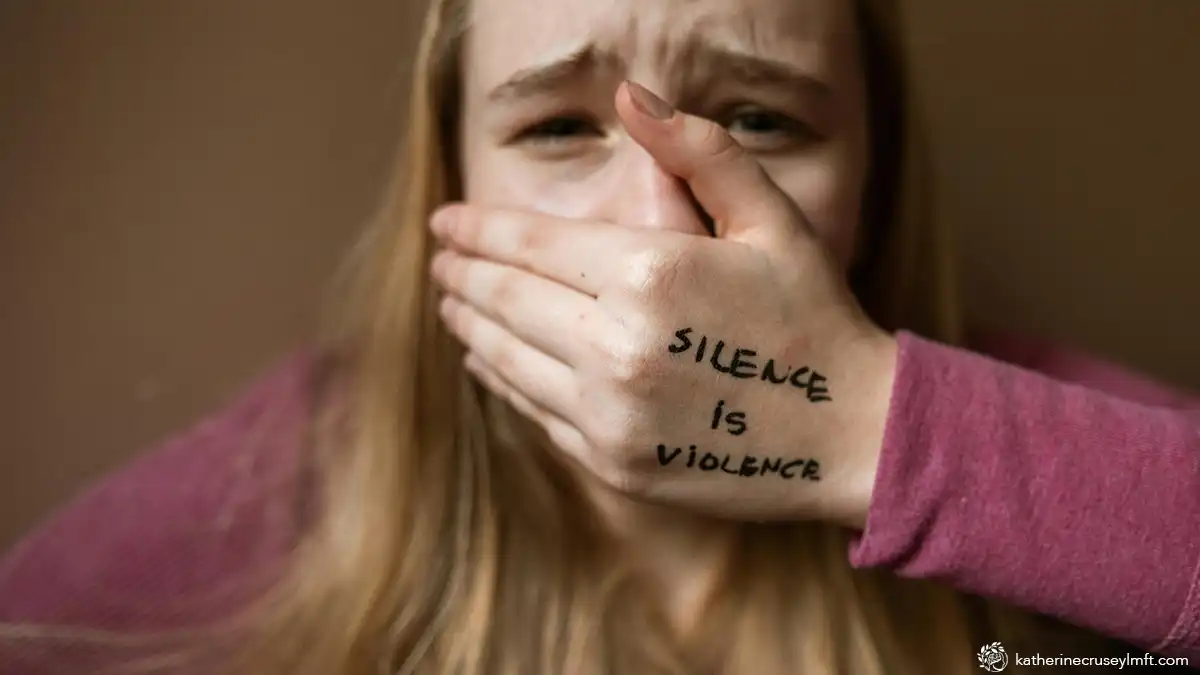Signs of Repressed Childhood Trauma in Adults

Childhood trauma is a deep and lasting experience that can affect individuals long into adulthood. Even when they may not consciously remember the events that caused the pain. Repressed childhood trauma occurs when painful or distressing experiences during childhood are pushed out of conscious awareness as a coping mechanism.
However, these hidden memories and emotions still influence behavior, mental health, and relationships later in life. Understanding the signs of repressed childhood trauma in adults is crucial for identifying individuals who may benefit from healing therapies such as EMDR (Eye Movement Desensitization and Reprocessing).
Signs of Childhood Trauma in Adults
Repressed childhood trauma can manifest in numerous ways in adults. Here are some of the most common signs:
1. Emotional Dysregulation
Adults with unresolved childhood trauma often struggle to manage their emotions. They may experience intense mood swings, anxiety, depression, or uncontrollable anger. Emotional responses may seem disproportionate to the situation, and individuals may feel like they’re “on edge”. Or overwhelmed by emotions they can’t fully understand.
2. Difficulty with Relationships
Childhood trauma can have a profound impact on how adults relate to others. They may struggle with trust, intimacy, or attachment. This may manifest as difficulty forming or maintaining close relationships, constant fear of rejection, or the tendency to push others away. In some cases, they may seek out relationships that mirror the abuse or neglect they experienced as children.
3. Self-Destructive Behaviors
Adults carrying repressed childhood trauma may engage in self-destructive behaviors such as substance abuse, overeating, or reckless behavior. These actions often serve as coping mechanisms to numb emotional pain. But they ultimately perpetuate negative patterns of behavior.
3. Flashbacks and Nightmares
Repressed trauma may not stay buried forever. Individuals with unresolved childhood wounds may experience vivid flashbacks, nightmares, or intrusive memories of traumatic events from their past. These symptoms are often triggered by similar circumstances or stimuli, bringing hidden trauma to the surface.
4. Low Self-Esteem and Worthlessness
Low self-esteem is one of the most notable signs of childhood trauma in adults. People who experienced trauma in childhood may carry deep feelings of unworthiness, shame, or guilt. They may constantly struggle with a negative self-image and feel that they are undeserving of love, success, or happiness. This can lead to chronic self-doubt and difficulty achieving personal or professional goals.
5. Chronic Health Problems
Emotional trauma, particularly when repressed, can manifest as physical symptoms. Many adults with unresolved childhood trauma experience chronic pain, gastrointestinal issues, headaches, or autoimmune disorders. These physical ailments often have no apparent medical explanation but are linked to emotional stress and unresolved trauma.
6. Avoidance and Numbing
Repressed trauma can lead adults to avoid situations, places, or people that remind them of their childhood experiences. They may also numb their emotions with alcohol, drugs, or compulsive behaviors to escape the distressing memories they are unwilling to face.
7. Difficulty with Memory and Concentration
Trauma can impair an individual’s ability to focus or recall important details of their past. This can manifest as forgetfulness, a sense of “brain fog,” or difficulty processing new information. The mind may block out certain memories as a way of protecting you from overwhelming feelings.
How EMDR Therapy Can Help Heal
One of the most effective therapies for treating repressed childhood trauma in adults is EMDR (Eye Movement Desensitization and Reprocessing). EMDR is an evidence-based psychotherapy that has been shown to help individuals process traumatic memories and reduce the distressing emotions associated with them.
During EMDR therapy, Katherine Crusey, LMFT guides you to recall traumatic memories while simultaneously engaging in bilateral stimulation. Typically, through guided eye movements. This process helps your brain reprocess the trauma in a way that reduces its emotional charge. Thus, allowing you to reframe your memories in a more adaptive way. Over time, this technique can reduce or eliminate the negative emotional reactions tied to the trauma.
How EMDR Works:
- Processing Memories: EMDR helps individuals bring to light repressed memories and process them in a safe and supportive environment. By confronting these memories, the trauma no longer exerts the same hold over the individual.
- Desensitization: The eye movements or other forms of bilateral stimulation used in EMDR are thought to help the brain process memories more efficiently. As a result, the emotional intensity associated with those memories is reduced.
- Reframing and Integration: As the trauma becomes less distressing, individuals can begin to reframe their thoughts, beliefs, and behaviors. EMDR encourages the development of healthier coping mechanisms and a more positive sense of self-worth.
Benefits of EMDR for Childhood Trauma:
- Rapid Relief from Trauma Symptoms: Many people report a significant reduction in trauma symptoms after just a few sessions of EMDR. The treatment helps individuals access and heal memories that have been blocked for years, enabling them to move forward with their lives.
- Address Root Causes: EMDR does not just alleviate symptoms but helps clients work through the root causes of their distress. This leads to long-term healing rather than just temporary relief.
- Empowering the Individual: Individuals often feel more empowered and in control of their emotions because EMDR helps them reprocess painful memories. Therefore, they are more equipped to create healthier ways to cope with the challenges and form more secure relationships.
Conclusion
Recognizing the signs of childhood trauma in adults is the first step in understanding and healing from repressed emotional wounds. Symptoms such as emotional instability, relationship difficulties, self-destructive behaviors, and chronic health problems often point to the lingering effects of early trauma.
Fortunately, therapies like EMDR offer a powerful approach to processing and healing trauma, helping individuals regain control of their lives and mental well-being. If you or someone you know shows signs of repressed childhood trauma, seeking therapy with a qualified EMDR practitioner can be a transformative step toward healing and recovery.
Related Posts

How To Stand Up To a Gaslighter: Reclaim Your Power
Gaslighting is one of the most manipulative and damaging forms of emotional abuse. It leaves…

How Does PTSD Affect Communication in Relationships?
Post-Traumatic Stress Disorder (PTSD) is a mental health condition that can significantly disrupt an individual’s…


